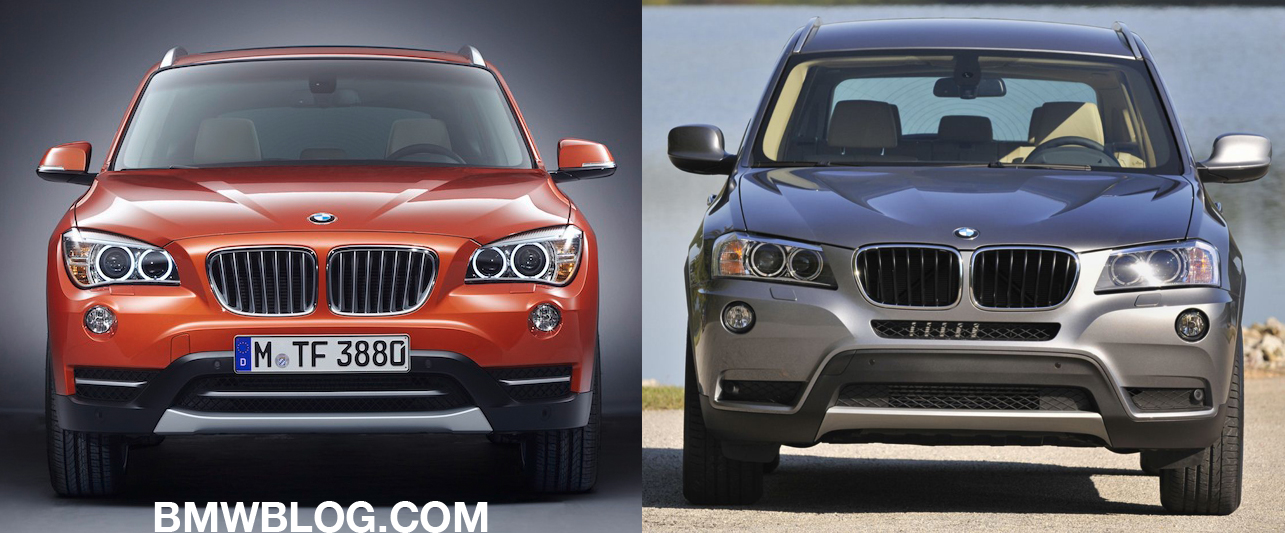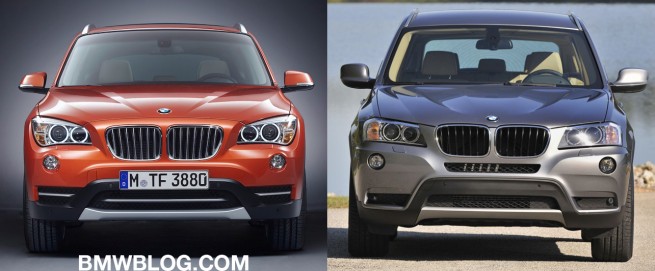In the eve of the 2012 New York Auto Show, we take the time to take a closer look at the new BMW X1 and how the company will choose to position the entry-level SAV in the U.S. market.
The 2013 BMW X1 will arrive at BMW dealerships in the fall of 2012 and will be offered in three variants: sDrive28i, xDrive28i and xDrive35i. The three models will retail for $31,545, $33,245 and $39,345 respectively (including $895 Destination and Handling).
In comparison, the BMW X3 xDrive28i has a base price of $37,995, while the top model, xDrive35i, sells for $43,995.
Even prior to the official announcement, BMWBLOG team posed the following questions: What will be the biggest differentiators between the two vehicles and will the U.S. buyers be confused with the many “X-choices”?
IMHO the big differentiator is going to be cost. If BMW can price the X1 significantly lower than the X3 than they shouldn’t cannibalize sales from themselves. BMW of Canada shows a base X1 at $38,500 and a X3 at $41,900 with the same 2.0 motor. That’s not much of a difference unless the base X1 has a lot more equipment on it. If BMW USA does that it could be a tough sell to the U.S. public.
The X3 seems to be more sport-ute’ish than the X1, whereas the X1 seems to almost be a crossover vehicle, kind of the segment that Subaru occupies – a large, tall, all-wheel drive wagon.
The demographic is tough, could be same people. It would just come down to if you want a wagon or an SUV. In the United States the SUV image sells better.
BMW put a silver highlight at the bottom that wasn’t there in the original Euro models to make it appear it has a higher ground clearance than it really does. Truthfully neat optical trick.
My take is the X1 has to be conquest sales, the Toyota RAV-4 CRV buyers looking to move up. If I were pitching the difference between the X1 and X3 to a customer, I would say there is more utility in the X3, but the X1 is well suited for a small family or an urban dweller.
Here’s a way of looking at the X1 versus the Toyota Venza. The latter is a mini-van posing as a four-door wagon. The X1 is a four-door wagon posing as an SUV.
In the U.S. market the 1 Series is not viewed by buyers as an entry level vehicle. The 1 Series, in both 128i and 135i form, has found a home with enthusiasts. We wouldn’t be surprised, for instance, if the percent take rate of manual transmissions is higher for the 1 Series than the 3 Series. The 3 Series remains the aspirational vehicle and the car intended to do conquest sales from other premium models. And, in most cases, the 3 Series is the entry point for car buyers to the brand.
With that said, the X1 has an opportunity to be a true entry level product, and not a niche product like the 1 Series, in the U.S. market. The X1, if priced correctly/competitively, can be the entry into the X models. It should be a mainstream product, not regarded as a niche and marketed heavily to buyers that want to move up to a premium experience in a sport utility. In that sense the X1 has an opportunity to generate conquest sales and bring buyers into the brand.
If it were my job, that’s how I would position the X1.
Stay tuned tomorrow for more BMW X1 coverage from the 2012 NYC Auto Show.






































































